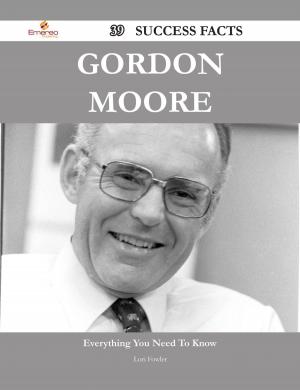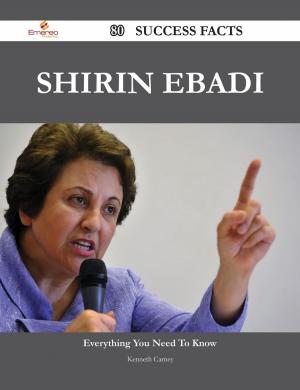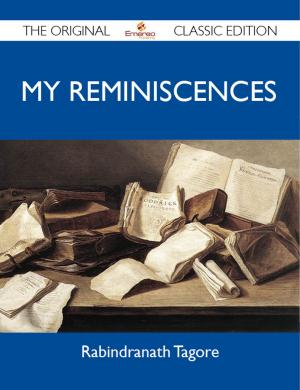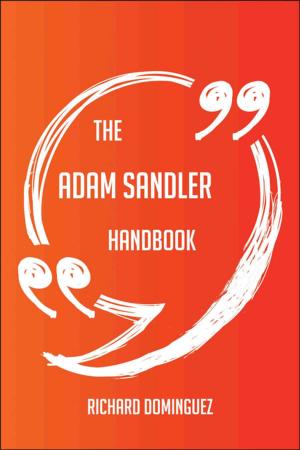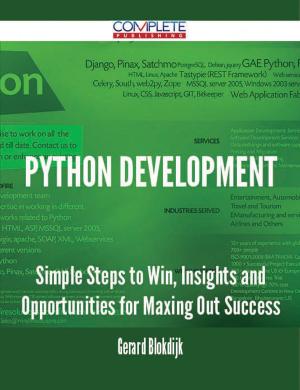| Author: | Amanda Bobby | ISBN: | 9781486427383 |
| Publisher: | Emereo Publishing | Publication: | October 24, 2012 |
| Imprint: | Emereo Publishing | Language: | English |
| Author: | Amanda Bobby |
| ISBN: | 9781486427383 |
| Publisher: | Emereo Publishing |
| Publication: | October 24, 2012 |
| Imprint: | Emereo Publishing |
| Language: | English |
Here's part of the content - you would like to know it all? Delve into this book today!..... : He is recognized by Buddhists as an awakened or enlightened teacher who shared his insights to help sentient beings end suffering (dukkha) through eliminating ignorance (avidya) and craving (ta¿ha), by way of understanding and seeing dependent origination (pratityasamutpada) and non-self (anatman), and thus attain the highest happiness, nirvana (nirvana).
...For Nagarjuna, it is not merely sentient beings that are empty of atman; all phenomena (dharmas) are without any svabhava (literally own-nature or self-nature), and thus without any underlying essence; they are empty of being independent; thus the heterodox theories of svabhava circulating at the time were refuted on the basis of the doctrines of early Buddhism.
...According to Zen master, Kosho Uchiyama, when thoughts and fixation on the little 'I' are transcended, an Awakening to a universal, non-dual Self occurs: ' When we let go of thoughts and wake up to the reality of life that is working beyond them, we discover the Self that is living universal non-dual life (before the separation into two) that pervades all living creatures and all existence.
...Certain basic teachings appear in many places throughout the early texts, so most scholars conclude that Gautama Buddha must have taught something similar to the Three marks of existence, the Five Aggregates, Dependent origination, Karma and Rebirth, the Four Noble Truths, the Noble Eightfold Path, and Nirvana.
There is absolutely nothing that isn't thoroughly covered in the book. It is straightforward, and does an excellent job of explaining all about Buddhism in key topics and material. There is no reason to invest in any other materials to learn about Buddhism. You'll understand it all.
Inside the Guide: Buddhism, Bodhisattva vow, Bodhisattva, Bodhidharma, Bodhicitta, Bodhi Tree, Bodhi, Bodh Gaya, Bhutan, Bhikkhuni, Bhikkhu, Bhavana, Bhavacakra, Bardo, Bahá'í Faith, B. R. Ambedkar, Atthakatha, Atisha, Atheism, Asura (Buddhism), Astrology, Ashoka, Asceticism, Asanga, Asalha Puja, Arunachal Pradesh, Arhat (Buddhism), Anussati, Anuruddha, Anuradhapura, Animism, Animals in Buddhism, Anguttara Nikaya, Angulimaliya Sutra, Anglicanism, Angiras (sage), Andhra Pradesh, Anatta, Anapanasati, Ananda, Anakapalle, Anagarika, Ajahn, Ahimsa, Afro-American religion, Afghanistan, Abhijna, Abhidharma, Abhidhamma Pitaka
Here's part of the content - you would like to know it all? Delve into this book today!..... : He is recognized by Buddhists as an awakened or enlightened teacher who shared his insights to help sentient beings end suffering (dukkha) through eliminating ignorance (avidya) and craving (ta¿ha), by way of understanding and seeing dependent origination (pratityasamutpada) and non-self (anatman), and thus attain the highest happiness, nirvana (nirvana).
...For Nagarjuna, it is not merely sentient beings that are empty of atman; all phenomena (dharmas) are without any svabhava (literally own-nature or self-nature), and thus without any underlying essence; they are empty of being independent; thus the heterodox theories of svabhava circulating at the time were refuted on the basis of the doctrines of early Buddhism.
...According to Zen master, Kosho Uchiyama, when thoughts and fixation on the little 'I' are transcended, an Awakening to a universal, non-dual Self occurs: ' When we let go of thoughts and wake up to the reality of life that is working beyond them, we discover the Self that is living universal non-dual life (before the separation into two) that pervades all living creatures and all existence.
...Certain basic teachings appear in many places throughout the early texts, so most scholars conclude that Gautama Buddha must have taught something similar to the Three marks of existence, the Five Aggregates, Dependent origination, Karma and Rebirth, the Four Noble Truths, the Noble Eightfold Path, and Nirvana.
There is absolutely nothing that isn't thoroughly covered in the book. It is straightforward, and does an excellent job of explaining all about Buddhism in key topics and material. There is no reason to invest in any other materials to learn about Buddhism. You'll understand it all.
Inside the Guide: Buddhism, Bodhisattva vow, Bodhisattva, Bodhidharma, Bodhicitta, Bodhi Tree, Bodhi, Bodh Gaya, Bhutan, Bhikkhuni, Bhikkhu, Bhavana, Bhavacakra, Bardo, Bahá'í Faith, B. R. Ambedkar, Atthakatha, Atisha, Atheism, Asura (Buddhism), Astrology, Ashoka, Asceticism, Asanga, Asalha Puja, Arunachal Pradesh, Arhat (Buddhism), Anussati, Anuruddha, Anuradhapura, Animism, Animals in Buddhism, Anguttara Nikaya, Angulimaliya Sutra, Anglicanism, Angiras (sage), Andhra Pradesh, Anatta, Anapanasati, Ananda, Anakapalle, Anagarika, Ajahn, Ahimsa, Afro-American religion, Afghanistan, Abhijna, Abhidharma, Abhidhamma Pitaka






